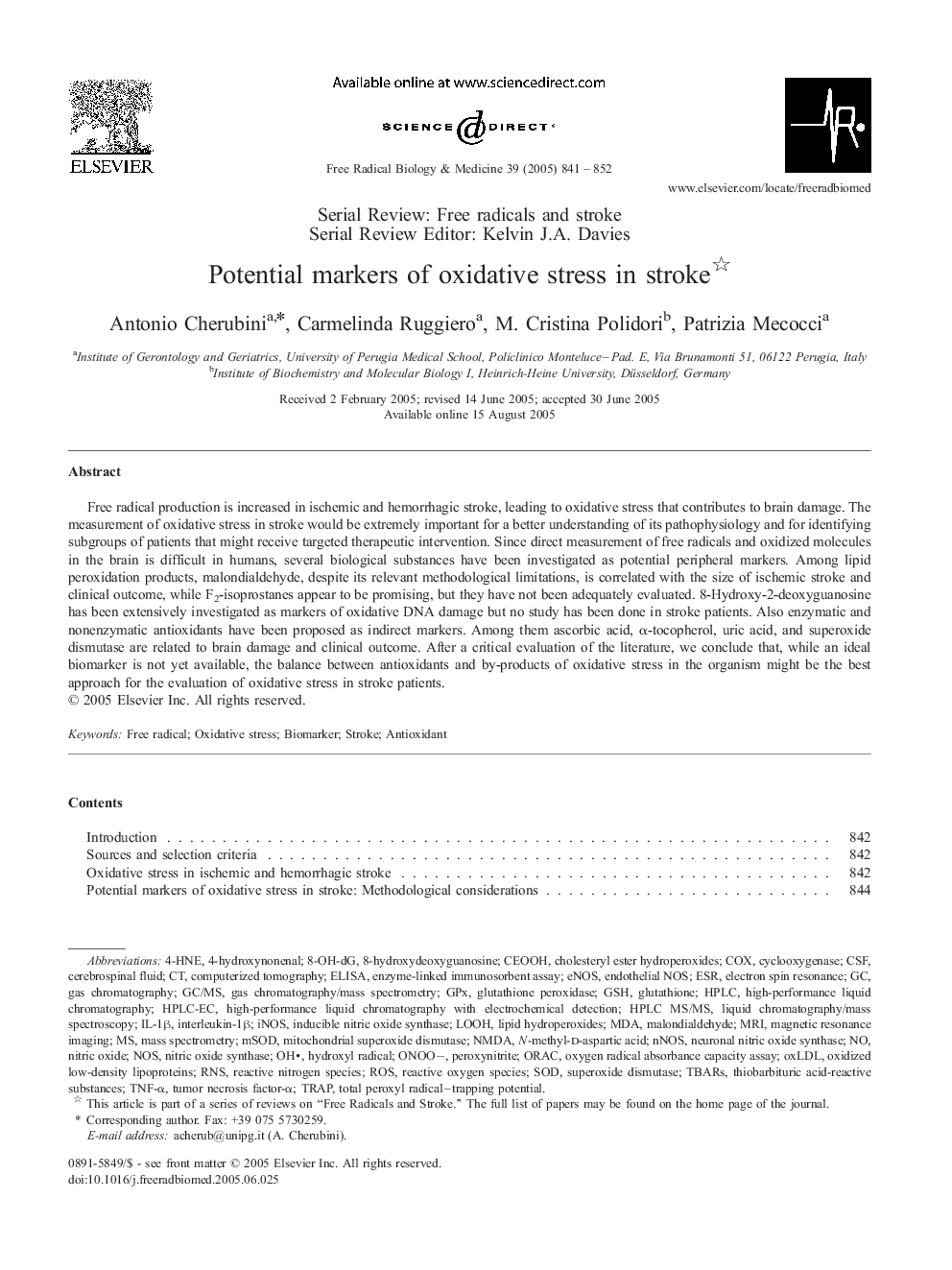| Article ID | Journal | Published Year | Pages | File Type |
|---|---|---|---|---|
| 10739014 | Free Radical Biology and Medicine | 2005 | 12 Pages |
Abstract
Free radical production is increased in ischemic and hemorrhagic stroke, leading to oxidative stress that contributes to brain damage. The measurement of oxidative stress in stroke would be extremely important for a better understanding of its pathophysiology and for identifying subgroups of patients that might receive targeted therapeutic intervention. Since direct measurement of free radicals and oxidized molecules in the brain is difficult in humans, several biological substances have been investigated as potential peripheral markers. Among lipid peroxidation products, malondialdehyde, despite its relevant methodological limitations, is correlated with the size of ischemic stroke and clinical outcome, while F2-isoprostanes appear to be promising, but they have not been adequately evaluated. 8-Hydroxy-2-deoxyguanosine has been extensively investigated as markers of oxidative DNA damage but no study has been done in stroke patients. Also enzymatic and nonenzymatic antioxidants have been proposed as indirect markers. Among them ascorbic acid, α-tocopherol, uric acid, and superoxide dismutase are related to brain damage and clinical outcome. After a critical evaluation of the literature, we conclude that, while an ideal biomarker is not yet available, the balance between antioxidants and by-products of oxidative stress in the organism might be the best approach for the evaluation of oxidative stress in stroke patients.
Keywords
NMDAGSHGPXTBARSNOSiNOSRNSORACeNOSTRAPESRIL-1β4-hydroxynonenal4-HNEnNOSN-methyl-d-aspartic acidCOXHPLC-ECoxLDL8-OH-dGMDACEOOHoxygen radical absorbance capacity assay8-hydroxydeoxyguanosineGC/MSONOO−ROSAntioxidantcyclooxygenaseMRIendothelial NOSInterleukin-1βBiomarkerELISAEnzyme-linked immunosorbent assayMagnetic resonance imagingOxidative stresstumor necrosis factor-αcomputerized tomographyHydroxyl radicalFree radicalElectron spin resonanceSODinducible nitric oxide synthaseneuronal nitric oxide synthaseMitochondrial superoxide dismutaseSuperoxide dismutaseStrokeMass spectrometryTNF-αLOOHOxidized low-density lipoproteinsmalondialdehydeCSFCerebrospinal fluidthiobarbituric acid-reactive substancesNitric oxidenitric oxide synthaselipid hydroperoxidescholesteryl ester hydroperoxidesPeroxynitriteLiquid Chromatography/Mass Spectroscopyhigh-performance liquid chromatography with electrochemical detectionHPLChigh-performance liquid chromatographygas chromatography/mass spectrometryGas chromatographyGlutathioneglutathione peroxidasereactive nitrogen speciesReactive oxygen species
Related Topics
Life Sciences
Biochemistry, Genetics and Molecular Biology
Ageing
Authors
Antonio Cherubini, Carmelinda Ruggiero, M. Cristina Polidori, Patrizia Mecocci,
